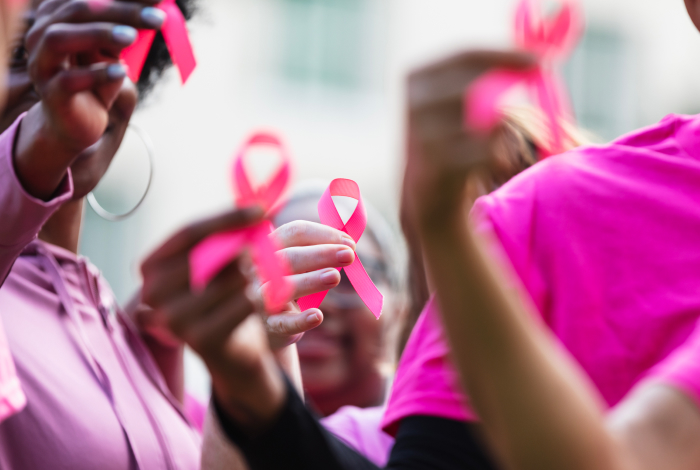Know your normal: The simple habit that could help prevent breast cancer

When it comes to breast health, knowledge really is power. No two breasts are exactly the same, and even your own breasts will change throughout your life. That’s why one of the most important things you can do is know what normal looks and feels like for you. By understanding the typical look, feel, and texture of your breasts, you’ll be better equipped to notice changes early, when treatment is most effective.
Breast cancer affects both women and men, and while you can’t completely prevent it, you can lower your risk and improve your chances of early detection through regular awareness and healthy habits. Here’s how to take charge of your breast health.
Why breast awareness matters
Breast cancer is the most common cancer among women worldwide. “Caught early, it has an excellent prognosis, with more than 95% of stage 1 breast cancer patients alive 10 years after diagnosis,” says Dr Shane Cullis, a clinical and radiation oncologist specialising in breast cancer from the Hopelands Cancer Centre based at Life Hilton Private Hospital. Being breast aware means understanding what’s normal for you – so that if something changes, you’ll know to get it checked.
Awareness goes beyond formal check-ups. It’s about building a lifelong habit of paying attention to your body, empowering you to act quickly if something feels unusual. This doesn’t replace screening tests like mammograms, but it complements them by keeping you in tune with your own health.
What’s normal anyway?
There’s no ‘normal’ breast. Breasts come in all shapes, sizes, and densities. They can feel lumpy, firm, or soft, and their texture may shift depending on your menstrual cycle, age, or hormone levels. For example:
- Menstrual cycle: Breasts often feel tender or swollen before your period.
- Pregnancy and breastfeeding: Breasts can grow, feel firmer, or change in sensitivity.
- Menopause: Breasts often become less dense and more fatty.
- In men: Breasts are smaller, but contain breast tissue that can develop changes.
The key is to know your baseline so you’ll notice when something is different and can bring this to the attention of your doctor.
How to examine your breasts
Breast self-examination doesn’t have to be complicated. In fact, it’s about being familiar rather than clinical. Try to build breast awareness into your routine once a month, ideally, at the same point in your menstrual cycle (for women), when breasts are less tender.
Here’s a simple guide:
- Look in the mirror: Raise your arms, then lower them, and check for changes in size, shape, or skin texture. In particular, look for dimpling, puckering, or redness.
- Feel while standing: Use the pads of your fingers to press gently but firmly in small circles, moving around the entire breast and into the armpit area. You can also do this in the shower with soapy hands, making it easier to glide over the breast and feel for inconsistencies.
- Feel while lying down: When you’re lying flat, breast tissue spreads out, making it easier to check for lumps or thickened areas.
- Check nipples: Gently squeeze to see if there’s any discharge, and look for changes in position or appearance.
This should take only a few minutes. Think of it as part of your self-care routine, like brushing your teeth.
Warning signs to look out for
While most breast changes are harmless, some need medical attention. Contact your doctor if you notice:
- a lump or thickened area that feels different from the rest of your breast tissue
- unexplained pain in one spot that doesn’t go away
- skin changes, such as dimpling, puckering, redness, or thickening of the skin
- nipple changes, such as retraction (a new pulling inward of the nipple – note that many women have permanently inverted nipples, which is normal), crusting, or discharge, especially if bloody
- swelling or a lump under the arm
Remember: finding a lump doesn’t mean you have cancer, but it’s always worth getting checked.
Lowering your risk
Being aware of your breasts is just one piece of the puzzle. You can also reduce your risk through healthy lifestyle choices and screening tests, which can aid early detection.
Try the following:
- Stay active: Regular exercise helps maintain a healthy weight and balances hormones.
- Eat well: A diet rich in fruits, vegetables, whole grains and lean proteins supports overall health. Avoid highly processed foods and excess refined carbohydrates.
- Limit alcohol: Even small amounts of alcohol increase breast cancer risk.
- Avoid smoking: Smoking has been linked to several cancers, including breast cancer.
- Screen regularly: Follow your doctor’s advice on mammograms and clinical exams (in the majority of cases, mammograms detect breast cancers long before they can be felt).
- Genetic testing: If you have a family history of breast cancer, see a genetic counsellor about genetic testing. “But remember that only 10% of breast cancers are hereditary,” says Dr Cullis.
These steps don’t guarantee prevention, but they strengthen your defences and increase the probability of detecting breast cancer when treatment can be less aggressive and outcomes are excellent.
Breast awareness for men
Although rare, men can develop breast cancer too. Awareness for men is equally important, especially since they are often diagnosed later, when the disease is more advanced. The same principles apply: know your normal, check regularly, and see a doctor if something changes.
Taking the first step
Breast awareness isn’t about living in fear. It’s about confidence. When you know what’s normal for you, you’ll be less anxious about natural changes and quicker to act if something seems off.
So, take a few minutes each month to check in with your body. Encourage your loved ones to do the same. By knowing your normal, you’re taking a powerful step toward protecting your health – for today and for the future.

